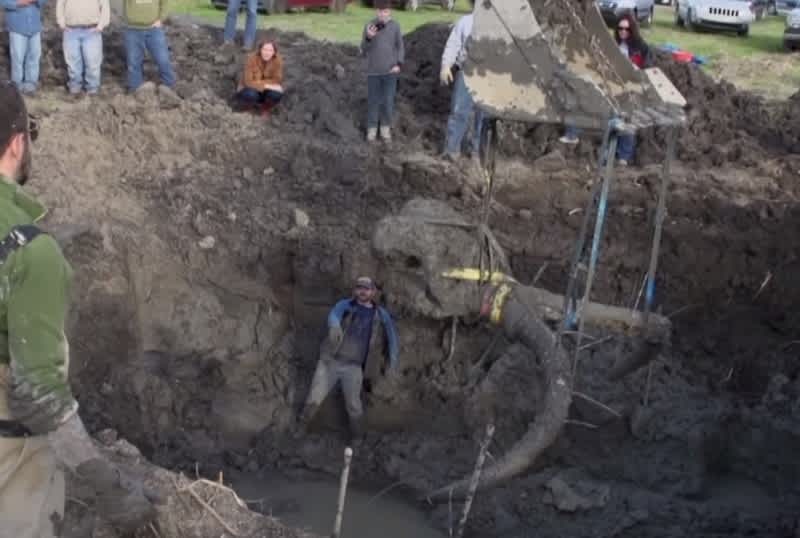Michigan Farmers Dig Up Bones of Ancient Woolly Mammoth
OutdoorHub Reporters 10.02.15

Farmers in Chelsea, Michigan made a shocking discovery on Monday when a routine dig in a soy field yielded a massive mammoth bone. Trent Satterthwaite and James Bristle were draining water from the field when they noticed pieces of what looked like petrified wood. Upon closer inspection, the two men realized they were looking at bones—and they belonged to something very big and very old.
“We knew it was something that was out of the norm,” Bristle told MLive.com. “My grandson came over to look at it, he’s 5-years-old, he was speechless.”
They called the nearby University of Michigan, which in turn notified professor Dan Fisher, the director of the Museum of Paleontology in Ann Arbor. Fisher was ecstatic about the find and called Bristle for permission to retrieve the rest of the mammoth from the farmer’s land. Bristle agreed—but only under the condition that Fisher could complete the dig within one day. On a farm time is money, and the landowner was on a tight schedule for the upcoming harvest.
One day was more than enough for Fisher and his team. With the help of a local excavator and about a dozen University of Michigan students, Fisher was able to retrieve about 20 percent of the animal’s skeleton. Due to the layout of the bones and other evidence they uncovered during the dig, researchers believe the animal was likely killed by early human hunters and then stored in a muddy pond in an attempt to preserve the meat. Many parts of the animal, such as its limbs, were not found at the dig site and assumed to be carried off by the hunters for consumption.
“They could be more distant, buried here at the site. It could be that they were eaten right after the animal was acquired,” Fisher said in a video interview with the university, which you can watch below. “Our working hypothesis for what we’re dealing with here is a partial skeleton, the pieces having been brought to this place by ancient humans for storage of carcass parts in a pond, it was their intent to come back later and retrieve this when they needed fresh meat.”
Tools and large rocks were found at the scene. Heavy boulders have been found near mammoth bones before, and researchers believe they were used to weigh down the heavy animals they could be covered by water. Ribs and other parts are also missing, which suggests that the hunters had already removed a large portion of the meat beforehand.
Fisher and his team used their time wisely and worked at a feverish pace to bring the bones out.
“We didn’t stop to eat or drink,” he told the Detroit Free Press. “It was a hard, hard day of work, but every bit worth it.”
The professor said the bones will be stored at the dig site for now and later assessed for their research value. Researchers say that about 30 mammoths have been uncovered in Michigan, but few have yielded so much.
You can watch Fisher talk about the find below.

